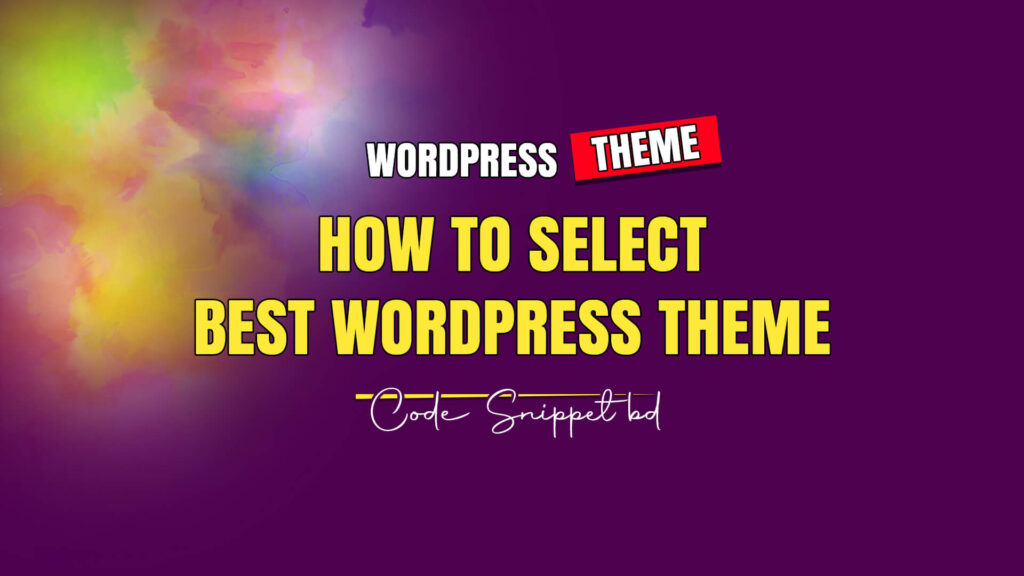Choosing the right WordPress theme is crucial for the success of your website. A well-chosen theme enhances the user experience, supports your content strategy, and aligns with your brand identity.
With thousands of themes available, finding the best one can be challenging. Here’s a guide to help you select the best WordPress theme for your website needs.
Your Website’s Purpose and Requirements
Before diving into the theme selection process, first define your website’s purpose. Are you creating a blog, an e-commerce site, a portfolio, or a business website? Each type of site has different requirements.
Make a list of must-have features and functionalities. For instance, an online store will need e-commerce support, while a blog might require advanced typography and easy content management.
Prioritize Performance and Simplicity
A visually stunning theme with complex animations may look impressive, but it can also slow down your site performance. Prioritize themes that are simple, clean, and focused on usability.
A minimalistic design not only improves performance but also ensures that your content is the main attraction. Look for themes that are well-coded and optimized for speed.
Mobile Responsiveness Checking
With a significant portion of web traffic coming from mobile devices, it is necessary to select a theme that is fully responsive.
A responsive theme adjusts its layout based on the screen size and resolution, providing an optimal viewing experience on desktops, tablets, and smartphones. Test the theme demo on various devices to ensure its responsiveness.
Browser Compatibility Checking
Your visitors may use different browsers to access your website. To ensure a consistent experience, choose a theme that is compatible with all major browsers like Chrome, Firefox, Safari, and Edge.
Most theme developers mention browser compatibility in their documentation. You can also test the theme demo on multiple browsers.
Theme Customization Options
A good WordPress theme should offer easy customization options without requiring you to write code. Check for built-in options like color schemes, typography settings, layout choices, and widget areas.
Some themes come with drag-and-drop page builders, allowing you to design pages without any technical skills. Ensure that the theme supports the level of customization you need.
Review Theme Feedback and Ratings
Before finalizing a theme, review its ratings and user feedback. Themes with high ratings and positive reviews are generally more reliable.
Check the theme’s support forum to see if the developer actively resolves issues and updates the theme. A responsive support team and regular updates are indicators of a well-maintained theme.
Theme’s Compatibility checking with Plugins
Plugins extend the functionality of your WordPress site. Make sure that the theme you choose is compatible with popular plugins like WooCommerce, Yoast SEO, Contact Form 7, and others that you might need.
Incompatibility issues can cause conflicts and affect your site’s performance and usability.
Check SEO Supportive
An SEO-friendly theme can significantly impact your website’s search engine rankings. Look for themes that are optimized for SEO with clean code, fast loading times, and proper HTML structure.
Some themes come with built-in SEO settings, while others are designed to work well with SEO plugins.
Evaluate the Theme’s Support and Documentation
Good documentation and support are crucial, especially if you’re not a technical expert. Check if the theme developer provides comprehensive documentation, including setup guides and troubleshooting tips.
Responsive support via forums, email, or live chat can be invaluable if you encounter any issues.
Select Between Free and Premium Themes
WordPress offers both free and premium themes. Free themes are great for beginners and small projects but often come with limited features and support.
Premium themes, on the other hand, offer advanced features, regular updates, and dedicated support. Evaluate your budget and the specific needs of your website to make an sensible decision.
In Summary
Selecting the best WordPress theme involves careful consideration of your website’s purpose, performance, responsiveness, customization options, compatibility, SEO friendliness, and support.
By following these guidelines, you can choose a theme that not only looks great but also enhances your site’s functionality and user experience. Take your time, explore your options, and select a theme that aligns perfectly with your vision and goals.










I’m extremely inspired along with your writing abilities and also with the format in your weblog. Is that this a paid subject or did you customize it yourself? Either way keep up the nice quality writing, it’s uncommon to see a nice weblog like this one these days.